Battery charger 12 v 331.00 x 215.00 x 93.00mm p12 25a
Goods available only in e-shop
549,50€
693,20€
-21%
Delivery: home 3-4wd
ADD TO BASKET
The Blue Sea Systems P12 Battery Charger is a dry mount unit designed for use in marine applications and other harsh environments where reliability, ease of use and high performance are paramount.
AGM, for submerged lead-acid, gel and TPPL batteries: 60-330 Ah, 4-step charging, 3 outputs, dry mount, for use in harsh environments, durable and ribbed aluminum housing, PreFloat™ mode prevents overcharging, corrected power factor for efficient use of AC current, intuitive diagnostic screens, user-definable charging profiles and customizable settings, ensures charging of up to three battery banks, large and bright display: multi-language (English, French, German, Italian, Spanish), battery temperature compensation: adjusts the charging voltage according to the battery temperature, AC over and under voltage shutdown with automatic restart , battery over- and under-temperature protection: the charger will not work if the battery temperature is too high or too low, DC over-voltage and reverse polarity protection, over-voltage and short-circuit protection, working temperature -20°C ... +70°C
Mass (Continuous Current)
1. The bulk charging stage is the first stage of the battery charging process. This is where most of the charging actually takes place, leaving the batteries for approx
75-80% of their final capacity. The purpose of the bulk stage is to quickly drive current into the batteries to boost their voltage. When all batteries have reached the specified absorption voltage, the charger moves them into the absorption phase.
2. Absorption (constant voltage)
In the absorption charging stage, the batteries stop their charge, discharging them. This is a less aggressive charging stage than Bulk charging, where the current going to a certain battery bank decreases significantly over time. The conditions under which a battery bank is considered full depend on many different factors. In order for the battery bank to exit the absorption phase, several different parameters must be met. The main parameters are the absorption timers, which you can see on page 14. The outputs go from individual absorption to pre-swimming. When all the batteries have finished absorbing, the charger moves them to the floating position.
3. Float* (constant voltage)
Float is the last stage of charging for fully charged batteries. Batteries in this stage are kept at their specified floating voltage. Typically, the float voltage is 1.0 V or more different from the sink voltage.
4. Eel float (constant voltage)
The Pre-Float charging stage is unique to the P12. As the size of the battery banks usually varies by output, each battery bank must be charged separately.
When all the batteries are absorbed, the battery banks can stop charging at different rates. Once the battery bank has met its unique absorption parameters, the P12 charger moves it autonomously into the pre-charger.
Float stage. Pre-Float is the initial stage to maintain a fully charged battery. Pre-Float batteries can have a difference of up to 0.5V
between batteries in absorption. Pre-Float can have up to two outputs at the same time.
Durable, ribbed aluminum body
PreFloat™ stage prevents overcharging
The power factor is corrected for efficient use of alternating current
Intuitive diagnostic screens
User defined fee profiles and customizable settings
Allows charging up to three battery banks
Big, bright screen
Multiple languages: English, French, German, Italian, Spanish
Charge coordination with Blue Sea Systems Automatic Charge Relays (ACRs) controls ACR status, ensuring proper float level for each battery
Battery temperature compensation - adjusts the charging voltage based on the battery temperature
AC overvoltage and undervoltage shutdown and automatic restart
Battery over- and under-temperature protection - the charger will not work if the battery temperature rises above or falls below the set value
DC overvoltage and reverse polarity protection
Overvoltage and short circuit protection
Technical specifications
Total output current 25A
AC input 4.5A @ 100V AC
2.25A @ 200V AC
Maximum output voltage 16V DC
Nominal voltage 12V DC
Ignition protection Devices operating in potentially explosive atmospheres must be equipped with ignition protection. This would include engine rooms with petrol engines. The device must pass very specific tests to obtain ignition protection. These include working safely in an explosive mixture of propane and air. Yes
Number of outputs 1 negative
3 positive
Stud size M6
Universal AC input voltage 115-230V AC
AC input frequency 45-65 Hz
Output voltage accuracy 0.05V
Typical floating voltage 13.5V DC
Minimum working temperature -20°C
Maximum working temperature 70°C
Minimum storage temperature -30°C
Maximum storage temperature 80°C
Battery types AGM
flooded lead acid gel
TPPL
(thin plate pure lead)
Recommended for battery bank sizes 330Ah Maximum Example: 3 x 31. group
60Ah Minimum Example: 2 x group 27
Screw terminal torque 10 in. (1.13 Nm) M3
15 in (1.69 Nm) M4
Stud Torque 80 in. (9.04 Nm)
Height 13.03 inches (330.96 mm)
Width 8.46 inches (214.88 mm)
Depth 3.66 inches (92.96 mm)
Warranty 5 years
Weight 5.44 kg
Includes 1 submersible temperature sensor
Manual

1790-7531-p12.pdf
AGM, for submerged lead-acid, gel and TPPL batteries: 60-330 Ah, 4-step charging, 3 outputs, dry mount, for use in harsh environments, durable and ribbed aluminum housing, PreFloat™ mode prevents overcharging, corrected power factor for efficient use of AC current, intuitive diagnostic screens, user-definable charging profiles and customizable settings, ensures charging of up to three battery banks, large and bright display: multi-language (English, French, German, Italian, Spanish), battery temperature compensation: adjusts the charging voltage according to the battery temperature, AC over and under voltage shutdown with automatic restart , battery over- and under-temperature protection: the charger will not work if the battery temperature is too high or too low, DC over-voltage and reverse polarity protection, over-voltage and short-circuit protection, working temperature -20°C ... +70°C
Four-stage, three-output, dry mount design for use in harsh environments.
Definitions of P12 loading steps are defined below. The charging stage LEDs on the front of the charger indicate the current stage.Mass (Continuous Current)
1. The bulk charging stage is the first stage of the battery charging process. This is where most of the charging actually takes place, leaving the batteries for approx
75-80% of their final capacity. The purpose of the bulk stage is to quickly drive current into the batteries to boost their voltage. When all batteries have reached the specified absorption voltage, the charger moves them into the absorption phase.
2. Absorption (constant voltage)
In the absorption charging stage, the batteries stop their charge, discharging them. This is a less aggressive charging stage than Bulk charging, where the current going to a certain battery bank decreases significantly over time. The conditions under which a battery bank is considered full depend on many different factors. In order for the battery bank to exit the absorption phase, several different parameters must be met. The main parameters are the absorption timers, which you can see on page 14. The outputs go from individual absorption to pre-swimming. When all the batteries have finished absorbing, the charger moves them to the floating position.
3. Float* (constant voltage)
Float is the last stage of charging for fully charged batteries. Batteries in this stage are kept at their specified floating voltage. Typically, the float voltage is 1.0 V or more different from the sink voltage.
4. Eel float (constant voltage)
The Pre-Float charging stage is unique to the P12. As the size of the battery banks usually varies by output, each battery bank must be charged separately.
When all the batteries are absorbed, the battery banks can stop charging at different rates. Once the battery bank has met its unique absorption parameters, the P12 charger moves it autonomously into the pre-charger.
Float stage. Pre-Float is the initial stage to maintain a fully charged battery. Pre-Float batteries can have a difference of up to 0.5V
between batteries in absorption. Pre-Float can have up to two outputs at the same time.
Durable, ribbed aluminum body
PreFloat™ stage prevents overcharging
The power factor is corrected for efficient use of alternating current
Intuitive diagnostic screens
User defined fee profiles and customizable settings
Allows charging up to three battery banks
Big, bright screen
Multiple languages: English, French, German, Italian, Spanish
Charge coordination with Blue Sea Systems Automatic Charge Relays (ACRs) controls ACR status, ensuring proper float level for each battery
Battery temperature compensation - adjusts the charging voltage based on the battery temperature
AC overvoltage and undervoltage shutdown and automatic restart
Battery over- and under-temperature protection - the charger will not work if the battery temperature rises above or falls below the set value
DC overvoltage and reverse polarity protection
Overvoltage and short circuit protection
Technical specifications
Total output current 25A
AC input 4.5A @ 100V AC
2.25A @ 200V AC
Maximum output voltage 16V DC
Nominal voltage 12V DC
Ignition protection Devices operating in potentially explosive atmospheres must be equipped with ignition protection. This would include engine rooms with petrol engines. The device must pass very specific tests to obtain ignition protection. These include working safely in an explosive mixture of propane and air. Yes
Number of outputs 1 negative
3 positive
Stud size M6
Universal AC input voltage 115-230V AC
AC input frequency 45-65 Hz
Output voltage accuracy 0.05V
Typical floating voltage 13.5V DC
Minimum working temperature -20°C
Maximum working temperature 70°C
Minimum storage temperature -30°C
Maximum storage temperature 80°C
Battery types AGM
flooded lead acid gel
TPPL
(thin plate pure lead)
Recommended for battery bank sizes 330Ah Maximum Example: 3 x 31. group
60Ah Minimum Example: 2 x group 27
Screw terminal torque 10 in. (1.13 Nm) M3
15 in (1.69 Nm) M4
Stud Torque 80 in. (9.04 Nm)
Height 13.03 inches (330.96 mm)
Width 8.46 inches (214.88 mm)
Depth 3.66 inches (92.96 mm)
Warranty 5 years
Weight 5.44 kg
Includes 1 submersible temperature sensor
Manual
1790-7531-p12.pdf
132,50€
143,80€
-8%
ADD TO BASKET
Delivery: home 3-4wd
197,30€
ADD TO BASKET
Delivery: home 3-4wd
153,80€
184,50€
-17%
ADD TO BASKET
Delivery: home 3-4wd

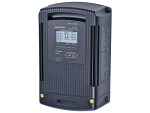



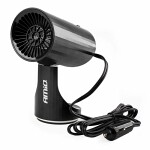

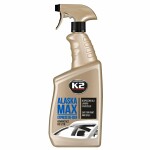


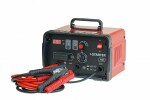
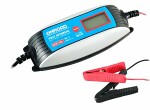

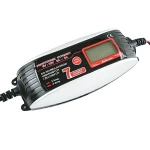
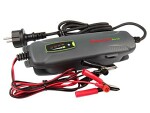


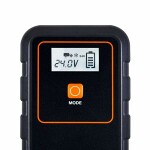
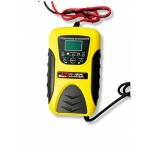
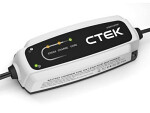
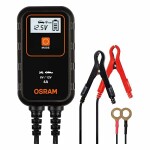
 The data shown here, especially the complete database, may not be copied. It is strictly prohibited to duplicate the data and database and distribute the same, and/or instruct third parties to engage in such activities, without prior consent from TecAlliance. Any use of content in a manner not expressly authorized constitutes copyright infringement and violators will be prosecuted.
The data shown here, especially the complete database, may not be copied. It is strictly prohibited to duplicate the data and database and distribute the same, and/or instruct third parties to engage in such activities, without prior consent from TecAlliance. Any use of content in a manner not expressly authorized constitutes copyright infringement and violators will be prosecuted.